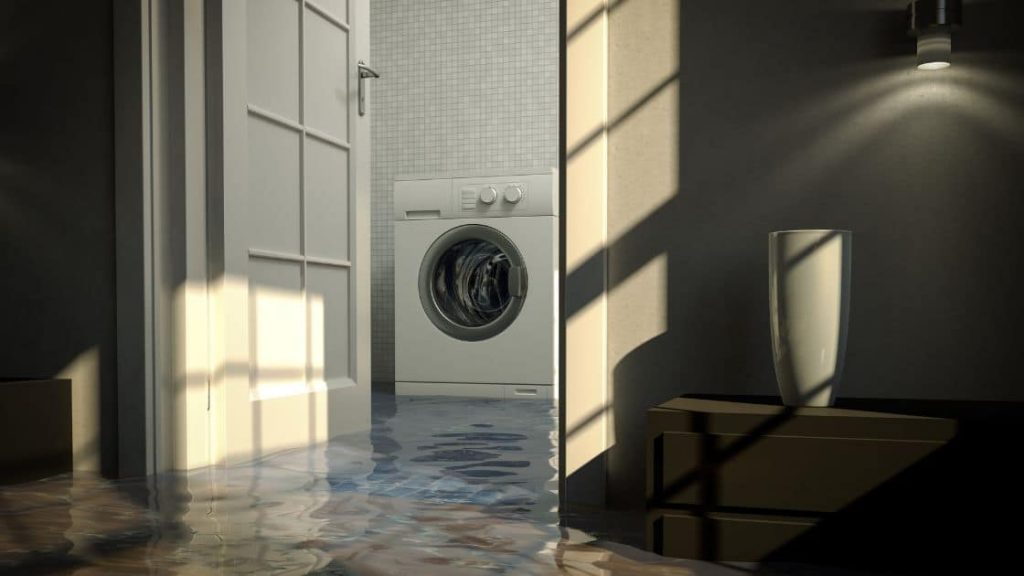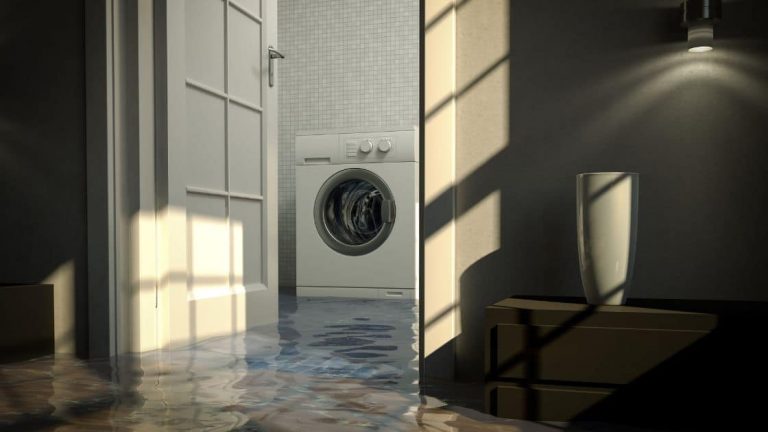Do you find yourself in a situation where your washing machine is below your sewer line and you wonder if it will work properly?
Maybe you just bought a new home and you find out that the washer is in the basement, with the sewer line several feet above. Sometimes up to 6 to 9 feet.
It could also be that you want to move your washer to the basement and you are considering the fact that it is going to be below the sewer line.
How do you pump the water from your washing machine into the sewer line at that height difference, knowing that your washing machine pump may not be that strong?
It is possible to have your washing machine below the sewer line. However, you will need to install a waste pump and a check valve to safely lift the wastewater all the way to the sewer since the washer pump can’t do that work in most cases.
In this article, we are going to explain in detail all the important things you need to consider and look out for if you are planning on using your washing machine at a height significantly below the sewer line.
Table of Contents

Can a washing machine be below a sewer line?
It may not be economic and ideal that a washing machine would be installed below a sewer line since it would require the water to flow uphill in order to reach the machine which requires extra resources.
However, if there is a pump or other mechanical means to move the water from the washing machine up to the sewer line, it is possible.
There is also the potential for flooding if the sewer line backs up, so it’s generally not recommended to install a washing machine below a sewer line.
But definitely a yes, if you can put in the additional resources and effort required to convey water up into the sewer, then you have no problem.
Can a washing machine pump water high up into a sewer line from the basement?
Yes, your washing machine may be able to pump water up the sewer line.
Washing machine user manuals come with specifications and usually will have the maximum height your washing machine can pump water.
This varies with washers. So you need to check your manual.
But generally, washing machines can pump to a maximum height of 39 inches (99cm).
Another rule of thumb is to check the hose that comes attached to your washer. Your washer can pump water as high as the length of the hose.
What to do
Many times you can raise your washing machine’s level in the basement to reduce the height of water your washer needs to pump.
So if it is possible by way of a pedestal or a raised platform in your basement, raise your washing machine a few inches in order to be able to pump the water into the sewer line as well as maintain code standards.
If you have a floor drain in your basement that is lower than the level of your washer, you can also try connecting a hose from your washing machine to the floor drain.
This will give your washing machine another outlet through the floor drain, and into the sewer line.
You should, however, consult with a professional before making any changes to your home’s plumbing.
How far can a washing machine be below the sewer line?
How low you can place a washing machine below the sewer line highly depends on the pump that is going to pump water from the washer all the way to the sewer line.
And the pump’s flow rate is inversely proportional to the height difference.
What that means is that the higher the height difference, the lower the flow rate of the pump.
Which will imply a bigger pump with any additional feet added to the height.
Compact washers are typically able to pump water to a maximum height of about 5 feet. While bigger washer can pump up to 8 feet.
Generally, Front load washers are able to pump water out at a rate of 10 gallons per minute whiles top loaders are able to pump at a rate of 15 gallons per minute.
The washing machine drain pipe is supposed to be elevated to a minimum height of at least 30 inches in order to prevent siphoning.
Siphoning is when your washer fills and drains simultaneously.
FAQs
Frequently asked questions:
Can washing machine backup sewer?
Yes. If your washing machine is lower than the sewer line, water can back up into your machine when there is a blockage in your washer hose or the sewer line. This is because water always flows downhill. To prevent this from happening, make sure your washing machine is at least as high as the sewer line.
How do I know if my washing machine is lower than the sewer line?
If you don’t know where your sewer line is, you can call your city’s public works department or your local plumber. They will be able to tell you where the sewer line is located.
Or you can also refer to the construction drawings as it would have been indicated in the plumbing drawings.
Conclusion
If you’re thinking about using your washing machine at a height below the sewer line, there are some things you need to consider first.
Namely, you’ll need to install a waste pump and check valve to lift the wastewater all the way to the sewer.
However, it is worth knowing that issues such as this are highly technical and you are advised to call a certified plumber to come and assess the situation at hand.
This will ensure that any connections or alterations you do doesn’t end up worrying you later.
References:

